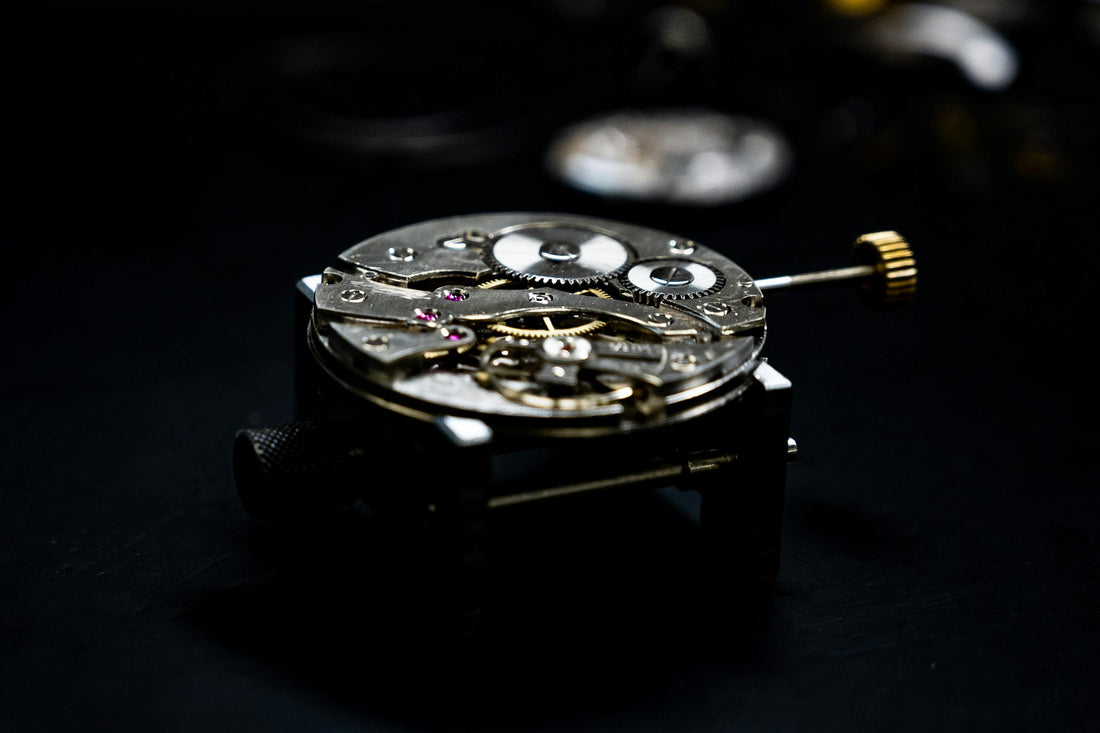Unraveling the myths, facts, and best practices
📋 Table of Contents
- What Does “Overwind” Mean?
- Manual vs Automatic: Key Differences
- Why You Can't Overwind an Automatic
- Behavior of a Fully Wound Automatic
- Potential Damage: Misconceptions Clarified
- Tips for Proper Winding & Maintenance
- Watch Winders: Friend or Foe?
- Summary: What You Should Know
1. What Does “Overwind” Mean?
One commonly heard phrase in horology is that you shouldn’t “overwind” your watch. For manual-wind watches, overwinding occurs when you wind the crown past the point of tension, straining or breaking the mainspring, or damaging the gears.
But when the same concern is applied to automatic watches, people often wonder: “Does wearing it too much cause damage from overwinding?” Let's investigate.
2. Manual vs Automatic: Key Differences
- Manual-wind watches require the user to turn the crown daily to tension the mainspring. The user feels increased resistance as the spring fills. Continuing beyond that point can cause internal breakage.
- Automatic watches use a weighted rotor powered by wrist movement to wind the mainspring. Many can still be manually wound if they include a clutch mechanism.
Modern automatics include a slipping clutch mechanism (or 'slipping bridle') that prevents excessive tension, allowing the mainspring to slip safely when fully wound.
3. Why You Can’t Overwind an Automatic
Automatic watch movements are designed with built-in protection:
- Slipping barrel and bridle system: When fully wound, the outer springs slip against barrel serrations instead of increasing tension.
- Friction grease inside barrel: Helps dissipate excess energy once fully wound.
From Oak & Oscar:
“Automatic watches cannot be overwound; they have an infinitely‑slipping mainspring.”
Even manual winding beyond the tension point on an automatic won’t break it—you’ll just feel the crown turning endlessly. Watch nerds have tested it until their knuckles get sore!
4. Behavior of a Fully Wound Automatic
Once fully wound:
- The rotor stops building tension and may “click” as the slipping mechanism engages.
- If manually wound at this point, you’ll notice no increase in resistance, and the winding feels endless and safe.
- When worn normally, the watch simply maintains a full power reserve (~40–50 hours), and excess winding is harmless.
In rare cases, aggressive use of watch winders—constantly rotating—might cause minor wear, not due to “overwinding,” but from mechanical fatigue over time.
5. Potential Damage: Misconceptions Clarified
While automatic watches can’t be overwound in the classic sense, you still need to watch out for:
- Rough manual winding when the watch is off-wrist: This might stress the keyless works.
- Neglect and dirty lubrication: A fully wound watch that stops is often due to friction, not overwind.
- Breaks from abuse: Dropping the watch or extreme shock can fracture delicate components—not a winding issue.
6. Tips for Proper Winding & Maintenance
✅ Do’s
- Wear regularly: Natural wrist movement keeps the rotor in motion and the watch wound.
- If unused, give a few manual turns (20–40): This ensures you start with full power.
- Service every 5–7 years: Keeps oils fresh and reduces friction.
🚫 Don’ts
- Don’t force the crown when manually winding—if resistance is felt, stop turning.
- Avoid aggressive vibration or constant high-speed rotation (like cryptic watch winders that rotate 24/7).
- Don’t neglect the winding even when it’s still ticking—fully wound misfires are usually lubrication-related.
YOU MAY ALSO LIKE :How to Wind an Automatic Watch: A Practical Guide
7. Watch Winders: Friend or Foe?
- 🕰️ Pros:
- Keeps watches running and ready-to-wear
- Prevents oils from settling (though opinions vary)
- ⚠️ Cons:
- May cause minor wear from non-stop rotor movement hardware.
- Experts recommend moderation; opt for intermittent winding cycles, not constant rotation.
8. Summary: What You Should Know
- You cannot overwind an automatic watch thanks to the slipping barrel mechanism.
- Manual winding a fully wound automatic just results in a loose crown, not breakage.
- Damage usually stems from neglect, dirt, or mechanical abuse, not from overwinding.
- Stick to safe winding habits—wear daily, manually wind when needed, and service routinely.
Final Take
🌟 Modern automatic watches are engineered with intelligence and safety in mind. They are designed so that no matter how long the crown is turned or how vigorously the rotor spins, the watch cannot be overwound. So go ahead—wear it, enjoy it, wind it when you need—just don’t stress about damaging it by overwinding.
Instead, focus on regular care, occasional servicing, and treating your timepiece as the delicate, wonderful instrument it is.
YOU MAY ALSO LIKE:Will a Watch Winder Damage My Watch? What Experts Say
